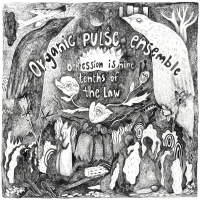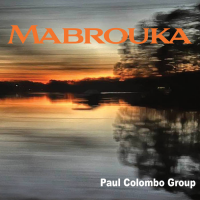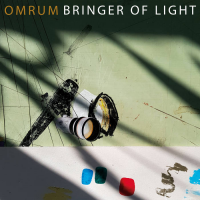Home » Jazz Articles » Album Review » Maria Schneider Orchestra: The Thompson Fields
Maria Schneider Orchestra: The Thompson Fields
But in a much different time, when the artistic offerings competing for our entertainment dollars and attention are vast compared to the days of five television channels and a handful of records labels, one artist has risen—in terms of talent and the beauty and perfection of her recent output—to an Ellington-ian level: Composer/arranger Maria Schneider.
Schneider's instrument is her eighteen piece orchestra. Concert in the Garden (ArtistShare, 2004) was an unexpected masterpiece. Sky Blue (ArtistShare, 2007) took it deeper, and now, The Thompson Fields continues in the same gorgeous and expansive mode, making that old argument that jazz is, indeed, America's classical music.
The Thompson Fields has every bit of the depth and unalloyed loveliness of her earlier work, but it seems more daring. The solos—Schneider, like Ellington, is a writer of solo spots for specific band members—are bolder, wilder, from Scott Robinson's haunting and mellifluous alto clarinet turn of "Walking By Flashlight," to saxophonist Donny McCaslin's stinging, searing tenor sax on "Arbiters of Evolution," to pianist Frank Kimbrough's delicate and pastoral beauty interacting with Lage Lund's folkish guitar on the title tune.
Schneider has a genius for examining and revealing the profound in small things: "Walking By Flashlight," from the poem "November 18" by Ted Kooser, celebrates a solo pre-dawn stroll in the open fields by a man with "the moon on a leash." "The Monarch and the Milkweed" explores the beauty of the butterfly and its relationship with its simple sustenance, bringing to mind, in concept, Duke Ellington's small gem, "Sunset and the Mocking Bird" that leads into "Lightning Bugs and Frogs," from his "The Queen's Suite," the opening section of The Ellington Suites (Pablo, 1976). "The Thompson Fields" (the tune) is a nostalgic rumination of a family farm neighboring Schneider's own childhood home in southwest Minnesota.
Throughout, Schneider's orchestra soars, it wafts gentle breezes fragrant with smells of the plains, it blows in controlled gales, and it paints rainbows—sometimes in subtle pastels, sometimes in bold primary colors—that brighten the backdrops some of the most inspired soloing imaginable. A magnificent album!
Track Listing
Walking By Flashlight; The Monarch And The Milkweed; Arbiters Of Evolution; The Thompson Fields; Home; Nimbus; A Potter's Song; Lembranca.
Personnel
Maria Schneider
composer / conductorSteve Wilson: alto saxophone, soprano saxophone, clarinet, flute, alto flute; Dave Pietro: alto saxophone, soprano saxophone, clarinet, flute, alto flute, bass flute, piccolo; Rich Perry: tenor saxophone; Donny McCaslin: tenor saxophone, clarinet, flute; Scott Robinson: baritone saxophone, bass clarinet, alto clarinet, clarinet; Tony Kadleck: trumpet, fluegelhorn; Greg Gisbert: trumpet, fluegelhorn; Augie Haas: trumpet, fluegelhorn; Mike Rodriguez: trumpet, fluegelhorn; Keith O'Quinn,: trombone; Ryan Keberle: trombone; Marshall Gilkes: trombone; George Flynn: bass trombone; Gary Versace: accordion; Lage Lund: guitar; Frank Kimbrough: piano; Rogerio Boccato: percussion (8); Clarence Penn: drums; Jay Anderson: bass.
Album information
Title: The Thompson Fields | Year Released: 2015 | Record Label: ArtistShare
Tags
About Maria Schneider
Instrument: Composer / conductor
PREVIOUS / NEXT
Maria Schneider Concerts
Support All About Jazz
 All About Jazz has been a pillar of jazz since 1995, championing it as an art form and, more importantly, supporting the musicians who make it. Our enduring commitment has made "AAJ" one of the most culturally important websites of its kind, read by hundreds of thousands of fans, musicians and industry figures every month.
All About Jazz has been a pillar of jazz since 1995, championing it as an art form and, more importantly, supporting the musicians who make it. Our enduring commitment has made "AAJ" one of the most culturally important websites of its kind, read by hundreds of thousands of fans, musicians and industry figures every month.





















